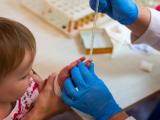Jul 9, 2012
WHO: Flu season starts in Southern Hemisphere
The flu season has started in most of the temperate Southern Hemisphere countries that collect surveillance information, the World Health Organization (WHO) said Jul 6 in its latest global flu update. The H3N2 virus is dominant overall, but the virologic picture varies by country, with some, including Bolivia, reporting high levels of 2009 H1N1 infections and others seeing co-circulation of influenza B. In Chile, flu activity has almost reached the country's alert threshold, and the proportion of emergency visits for respiratory disease has reached 31%, surpassing the level reported for the same period in the last 2 years. Most virus detections there are H3N2. Brazil has reported a sustained rise in flu detections since the middle of May, with a notable increase in severe respiratory infections, 80% from the 2009 H1N1 virus and the rest from H3N2. In Bolivia, more than 50% of samples tested were positive for flu, and the country has seen a
recent rise in severe infections. In sub Saharan Africa, limited data suggests low or no flu activity in most countries, except for Ghana, Ivory Coast, and Madagascar. South Africa's flu season started in late May and is persisting. Meanwhile, flu activity in Australia has been rising over the past 5 weeks, with the H3N2 virus dominant. Virus detections are also increasing in New Zealand, but levels are still below the national baseline. In tropical Asian countries, flu activity was low or undetectable, with persistent activity in Hong Kong now easing off.
Jul 6 WHO global flu update
Study: Synthetic protein jump-starts immune response to flu
Experiments with a synthetic protein called EP67 in mice found that the substance activated the innate immune system within 2 hours of flu infection, raising hopes that the treatment could speed protection against a broad range of other respiratory pathogens, including bacteria and fungi. The findings, from researchers at San Diego State University (SDSU) and the University of Nebraska Medical Center, were published in Public Library of Science (PLoS) One on Jul 6. The mice were infected with influenza A (H1N1) and then given an inhaled formulation of EP67, which has previously been used as a vaccine adjuvant. Mice that were treated within 24 hours after infection lost only 6% of their weight, compared with the 20% that's typical for flu-infected mice, according to a Jun 6 EurekAlert press release. Mice that were treated the day after they were infected with a usually-lethal dose of flu virus did not die. The
researchers wrote that a single treatment induced a potent antiviral response with rapid cytokine induction followed by an influx of innate effector-cell populations. A dose delivered 2 or 3 days after infection, however, yielded no benefit. Though the treatment induced an early, robust innate response, it did not appear to hurt humoral protection, they wrote. Joy Phillips, PhD, an SDSU immunologist and lead author of the study, said in the press release, "EP67 could potentially be a therapeutic that someone would take when they know they've been exposed that would help the body fight off the virus before you get sick." She added that the treatment could be useful for battling new pathogens that emerge, even before they are identified.
Jul 6 PLoS One abstract
Jul 6 EurekAlert press release
Pandemic vaccine uptake was poor in pregnant French women
Despite an active campaign in France urging pregnant women to receive the 2009 H1N1 pandemic vaccine, poor coverage ensued, with social disparities and no increase in protection for women at highest risk for complications, according to a study published online Jul 7 in Vaccine. Data from 13,453 French women who were in their second trimester during the campaign were analyzed. Coverage was 29.3% (95% confidence interval [CI], 28.6%-30.1%). Among women not getting the vaccine, 91.2% gave as the reason that they did not want it. The vaccination rate was higher in pregnant women who were older, were employed, were born in France, had fewer than three children, and had positive health behaviors during pregnancy. Women who had received postgraduate education had an adjusted odds ratio for vaccination of 4.1 (95% CI, 3.5-4.8) compared with those having less than a high school education. The vaccination rates for women with risk
factors for complications from flu (eg, diabetes, asthma) and those without were similar.
Jul 7 Vaccine study

















